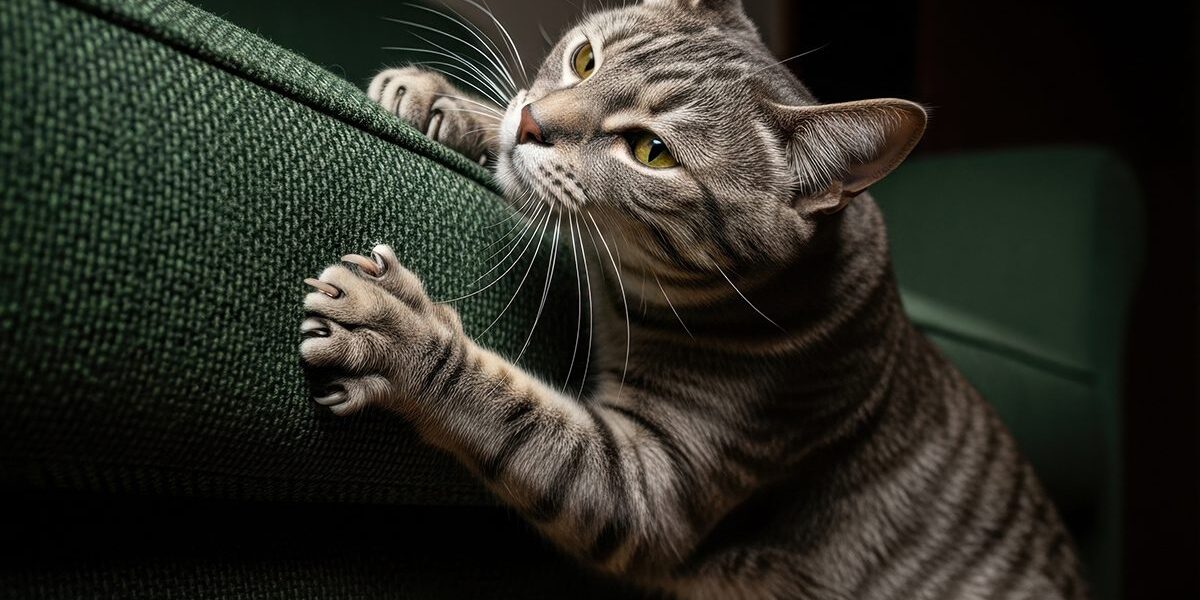
Top 5 Cat Behavior Questions and Tips — From PetMed of Key West
Cats may have a reputation for being independent, but they still benefit from training and behavior guidance. At PetMed of Key West Veterinary Clinic in Dubuque, IA, we help cat owners address common behavior challenges so life at home is more harmonious — for both cats and humans.
Here are the top 5 cat behavior FAQs we hear, along with our tips to address them.
1. How Do I Stop My Cat From Scratching Furniture?
Scratching is a natural cat behavior that helps them keep their claws healthy and mark territory.
Tips:
- Provide multiple scratching posts or pads made of materials your cat enjoys, such as sisal rope or cardboard.
- Place scratching posts near the areas your cat already scratches.
- Use cat-safe deterrent sprays or double-sided tape on furniture.
- Reward your cat when they use the scratching post.
- Note: We do not recommend declawing — it’s painful and can lead to long-term problems.
2. How Do I Stop My Cat From Biting?
Biting can be a sign of overstimulation, fear, or play aggression.
Tips:
- Learn your cat’s body language so you can stop petting before they become overstimulated.
- Use toys — not hands — during play.
- Provide regular interactive play sessions to release excess energy.
- If biting is fear-related, give your cat safe spaces and avoid forcing interactions.
3. How Do I Litter Train My Cat?
Most cats instinctively use a litter box, but sometimes issues arise.
Tips:
- Keep the litter box clean — scoop daily and wash weekly.
- Provide one litter box per cat, plus one extra, in quiet, low-traffic areas.
- Try different litter types to find one your cat prefers.
- If your cat stops using the box, see your vet — medical issues like urinary tract infections can be a cause.
4. How Do I Stop My Cat From Meowing Excessively?
Some cats are naturally more vocal than others, but sudden or excessive meowing can indicate a problem.
Tips:
- Rule out medical causes with a veterinary exam.
- Avoid rewarding meowing with food or attention — wait for quiet moments.
- Provide mental stimulation with toys, puzzle feeders, and window perches.
- Be mindful of changes in your home or routine, which can cause stress-related vocalization.
5. How Do I Help My Cat Get Along With Another Pet?
Introducing cats to other pets takes time and patience.
Tips:
- Keep pets separate at first, allowing them to smell each other through a door.
- Swap bedding or blankets so they get used to each other’s scent.
- Use baby gates or controlled meetings before full interaction.
- Reward calm, non-aggressive behavior from both animals.
Feline Behavior Success Comes With Patience
Cats respond best to positive reinforcement, consistency, and a stress-free environment. At PetMed of Key West, we can help you address problem behaviors and make personalized recommendations for your cat’s needs.
📍 PetMed of Key West Veterinary Clinic
2262 Flint Hill Drive, Dubuque, IA 52003
📞 563-583-8387
🌐 dbqpetmed.com
